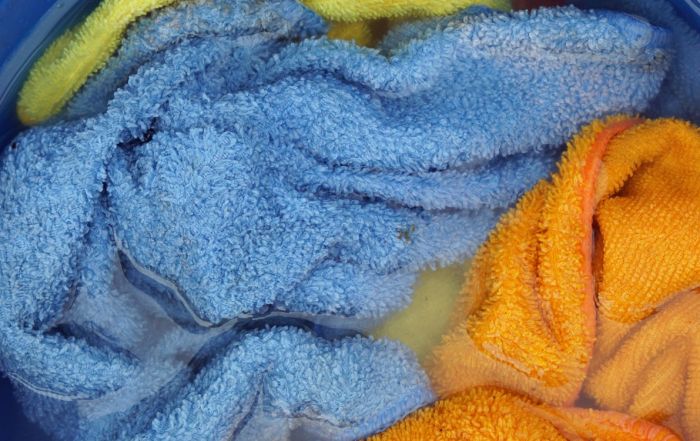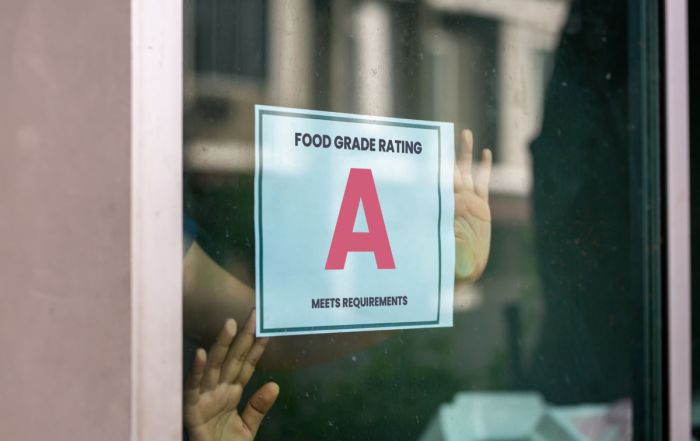Why Cooling Foods Correctly Isn’t Something to Chill Out Over
Twenty-eight years ago last month, Kevin began his career in the foodservice industry. He started as an assistant prep cook in an independent owned restaurant in Iowa. Like many of you, he remembers his first few days just like it was yesterday. Having never stepped foot in a commercial kitchen, it was a whirlwind of learning. He was trained to do so many “new” things in those first few weeks, dishing up salads, cleaning and peeling ridiculous amounts of carrots and onions, closely following recipes to make steam-jacketed kettles full of chili, spaghetti sauce, or any one of a variety of homemade soups. He also faintly recalls the discussion of cooling those soups, which were cooked in bulk, cooled, and re-heated in smaller batches for service over the course of a few days. Back then, the discussion went something like this, “after cooking, we put the [insert name of soup or sauce here] into these two-gallon storage containers and place it in the cooler as quickly as possible. We never put the lid on, we leave it askew so we can let heat out. About an hour or so later, we can put the lid on and label it.”
Back then, that conversation made perfect sense. Kevin grew up participating in Foods and Nutrition projects in 4-H, so he was aware of the basics of food safety. Flash forward about 5½ years to the spring of 1997 when he was a freshman in Dr. Cathy Strohbehn’s HRI 293, Hospitality Sanitation course at Iowa State University (in which he earned an A, by the way!😁). This was his first indication that perhaps the practices used at the restaurant were not as foolproof as he once thought they might be.
… improper cooling practices contributed to 504 outbreaks associated with restaurants or delis.
-Centers for Disease Control and Prevention
Flash forward another 20 years, and Kevin was at Kansas State University and working with a very talented team of researchers to complete a cooling study as part of the Center for Food Safety in Child Nutrition Programs (which include the National School Lunch and Breakfast Programs). Their focus was to replicate practices observed in school nutrition operations, which were not necessarily best practices. [If you need some reading material to put you to sleep at night, we will post the publications that resulted from these studies at the end of the blog for this month. 😂] As many of you likely know, the Food Code requires hot, temperature controlled for safety foods be lowered from a temperature above 135°F to below 70°F in two hours, and then reach below 41°F within a combined total of six hours. The researchers used various cooling methods and products and learned very quickly that even reducing food hot-off-the-stove to a 2” depth and placing it directly in the cooler was not going to be sufficient to meet the FDA Food Fode requirements. One of the methods tested was to place a 128oz Rapi-Kool™ into a stock pot of chili. This is NOT the proper way to use a Rapi-Kool™, but it was done to replicate a cook who may be anxious to go home at the end of their shift and simply placed the Rapi-Kool™ in the pot of chili and went home, assuming that it would cool the chili properly. While the researchers didn’t necessarily think it would meet the FDA requirements, it took an astonishing 24+ hours to cool! In defense of the Rapi-Kool, that product works great in an active cooling scenario (in which the cool stick is agitated or used to stir the product periodically through the cooling cycle), but again, they are not designed as a passive cooling device.
Many operators may be reading this and wondering if cooling is really that big of an issue with regards to foodborne illness outbreaks. The Centers for Disease Control and Prevention notes that between 1998 and 2008, improper cooling practices contributed to 504 outbreaks associated with restaurants or delis. An article in Science Daily back in 2000 even noted that improper cooling is thought to be the top cause of foodborne illnesses in the United States. Improper cooling continues to stay on the list of the top five reasons why foodborne illnesses occur.
Have the cooling practices used in your operation been given a thorough review? Do employees know the correct way to cool products that ensures there is no temperature abuse? Join us for our November webinar, Chill Out! Implementing Safe Food Cooling Practices with Dr. Paola Paez, Kevin’s colleague from the Center for Food Safety Research at Kansas State University, and learn a few strategies to implement correct cooling practices in your foodservice. Cooling food properly isn’t something that should be taken for granted and simply chill out over. It also isn’t something that requires a large investment, except in knowledge. Know that your cooling practices work for your business. Risk Nothing.
[/vc_column_text][vc_separator style=”shadow” border_width=”3″ el_width=”70″][vc_column_text]READ MORE POSTS
Embracing Technology for Enhanced Food Safety in Foodservice Operations
Technology. We love it, we hate it. I’ve always been fascinated by technology; I remember getting my first Blackberry in the mid-90s and thinking it was the pinnacle of technological advances. Before that, I remember ordering a dictation program in college that was going to revolutionize the way I “typed” my assignments. Looking back, it really wasn’t worth the box that the program came in. Now, we have ChatGPT that will write the entire paper for us!
Meat Color and Doneness: Persistent Pinking
Late in June, my family and I were able to visit the Black Hills, an area of the country in which I have not had the opportunity to spend much time. One evening, as we dined at a local restaurant, I observed a table across the dining room sending back a dinner. While I couldn’t hear the entire conversation and I certainly wasn’t trying to eavesdrop, it was apparent that the customer was unhappy with the cooking of their hamburger and was sending it back because it was too pink in the middle. That immediately brought to my mind the phenomenon known as persistent pinking. A term I became familiar with because of work done by some colleagues here at Kansas State, which they present each summer to a group of foodservice operators who join us on-campus for an in-depth week-long look at all things food safety.
Quat Binding – Why this Can Have a Disastrous Impact on Your Sanitation Program.
In June, I had the opportunity to represent FoodHandler and speak on food safety behavior for customers of Martin Bros. Distributing in Waterloo, Iowa. One of the questions that was asked caught me a little off guard. The question was about quat binding. It caught me off guard not because it was a bad question, but only because it was not something I had previously been asked nor had not yet been exposed to the phenomenon. However, I soon learned that in certain jurisdictions, it is resulting in changes to how sanitizing cloths are to be stored in sanitizing buckets (or not) in the foodservice industry. When I returned home from the trip, I had to dig into it to learn about what quat binding is and how it might impact foodservice operations.
Are Grades for Foodservice Inspections a Good Idea?
I generally try to stay away from controversial topics in my blog, but this is one I thought it might be interesting to discuss. Occasionally on my travels, I will come across a state or a local jurisdiction that requires foodservice inspection scores be posted in the window of the establishment. The idea is to allow would-be customers the ability to see how the foodservice operation in which they are about to eat scored on their latest health inspection.










